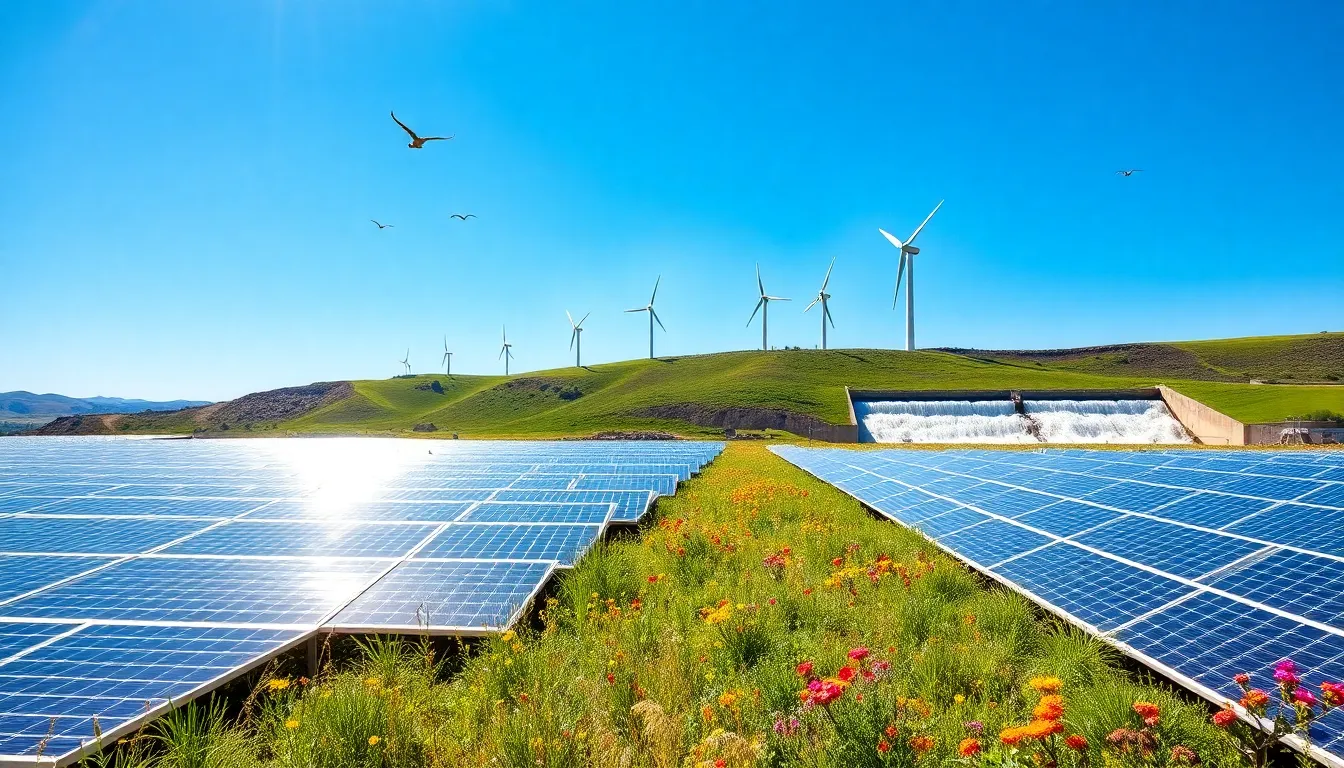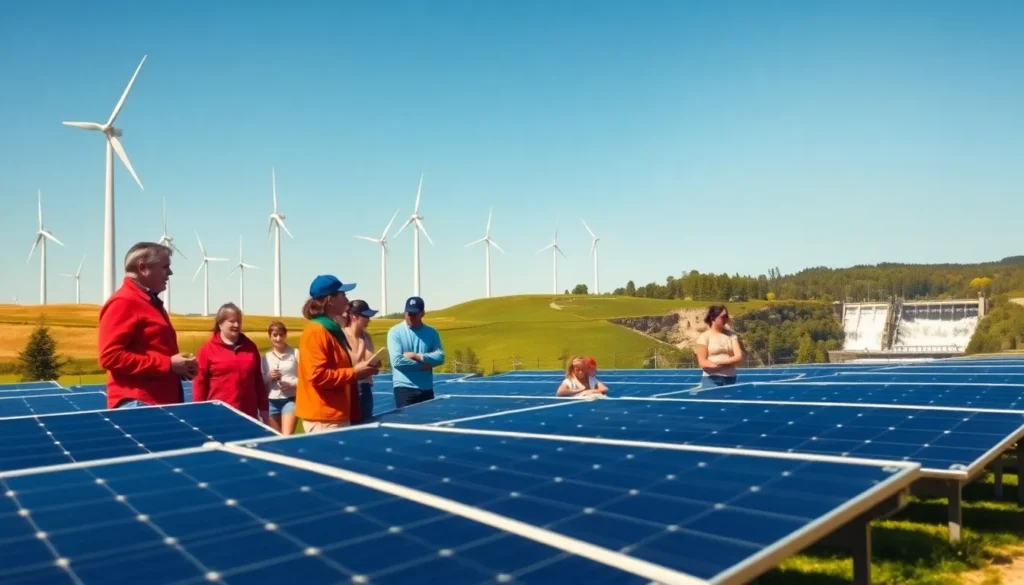In an era marked by climate change and rising energy demands, the exploration of renewable energy has become more crucial than ever. “Lots of Power” emerges as a hub for understanding the nuances of energy solutions that are sustainable, efficient, and essential for our future. This article delves into the variety of renewable energy sources available today, the importance of energy efficiency, and the trends that are shaping the future of energy. Discover how these elements interconnect to unlock the potential of energy solutions that not only power our lives but also preserve our planet.
Table of Contents
ToggleUnderstanding Renewable Energy

Renewable energy is derived from natural sources that are replenished at a faster rate than they are consumed. This includes solar, wind, hydroelectric, geothermal, and biomass energy. These sources are crucial as they offer sustainable alternatives to fossil fuels, helping to reduce greenhouse gas emissions and combat climate change.
Types of Renewable Energy Sources
- Solar Energy: Harnessed through photovoltaic cells or solar thermal systems, solar energy is one of the fastest-growing renewable sources. With the potential to generate electricity and heat water, its applications are vast and versatile.
- Wind Energy: Generated through wind turbines, this energy source captures kinetic energy from winds and converts it into electricity. As technology advances, wind energy is becoming more efficient and cost-effective.
- Hydroelectric Energy: This energy comes from the movement of water, typically generated by dams. By trapping water and using its flow to turn turbines, hydroelectric plants produce a significant amount of global electricity.
- Geothermal Energy: Sourced from the Earth’s internal heat, geothermal energy can be utilized for heating and electricity generation. Regions with volcanic activity, like Iceland, take advantage of this powerful resource.
- Biomass Energy: Organic materials, such as plant and animal waste, can be converted into bioenergy. It serves as both fuel and electricity generation source, making it a flexible alternative.
Benefits of Renewable Energy
Transitioning to renewable energy sources offers myriad benefits:
- Environmental Impact: Reducing reliance on fossil fuels helps decrease pollution and greenhouse gas emissions.
- Economic Growth: The renewable energy sector creates jobs in areas such as design, installation, and maintenance of energy systems.
- Energy Independence: Nations can reduce their dependence on imported fuels, enhancing energy security.
- Sustainability: Renewable resources are abundant and will not deplete over time, making them a long-term solution to energy needs.
The Importance of Energy Efficiency
Energy efficiency plays a critical role in managing energy resources wisely. By consuming less energy while maintaining the same output, individuals and organizations can significantly reduce costs and their carbon footprint.
Strategies for Enhancing Energy Efficiency
- Upgrading Infrastructure: Investing in energy-efficient technologies such as LED lighting, high-efficiency appliances, and smart thermostats can lead to substantial savings.
- Implementing Energy Management Systems: These systems help organizations track energy use and identify inefficiencies, guiding them to make informed decisions.
- Conducting Energy Audits: Regular audits help identify where energy is being wasted, allowing for targeted actions to enhance efficiency.
- Promoting Behavioral Changes: Encouraging individuals to adopt energy-saving habits, like turning off lights when leaving a room or using power strips, can contribute to overall energy savings.
- Incentives and Rebates: Governments and utility companies often provide financial incentives for those who invest in energy-efficient technologies.
The Future of Energy: Trends to Watch
As the energy landscape evolves, several key trends are emerging that promise to revolutionize how we produce and consume energy.
Innovative Technologies in Energy Production
Advancements in technology are driving the future of energy. For instance, energy storage solutions, such as battery technology, are becoming more advanced, enabling better integration of intermittent renewable sources like solar and wind. Also, innovations in carbon capture and storage (CCS) technology are being developed to monitor and mitigate emissions from fossil fuel sources.
Policy and Regulatory Changes in the Energy Sector
Government policies play a pivotal role in shaping the future of energy. Efforts to carry out stricter emissions regulations, provide tax incentives for renewable energy investments, and encourage energy efficiency initiatives are gaining momentum globally. Climate agreements and international cooperation are also pushing countries to focus on cleaner energy sources, highlighting a collective responsibility for a sustainable future.
Conclusion
Understanding the dynamics of renewable energy, energy efficiency, and the future trends in the energy sector is crucial for navigating the challenges and opportunities that lie ahead. “Lots of Power” emphasizes the importance of taking informed and proactive steps toward adopting sustainable energy solutions. By embracing renewable sources, enhancing energy efficiency, and staying abreast of emerging trends, individuals and organizations can help shape a cleaner and brighter energy future.



